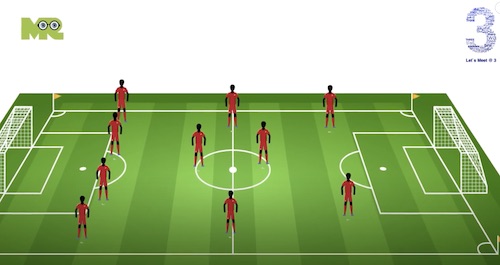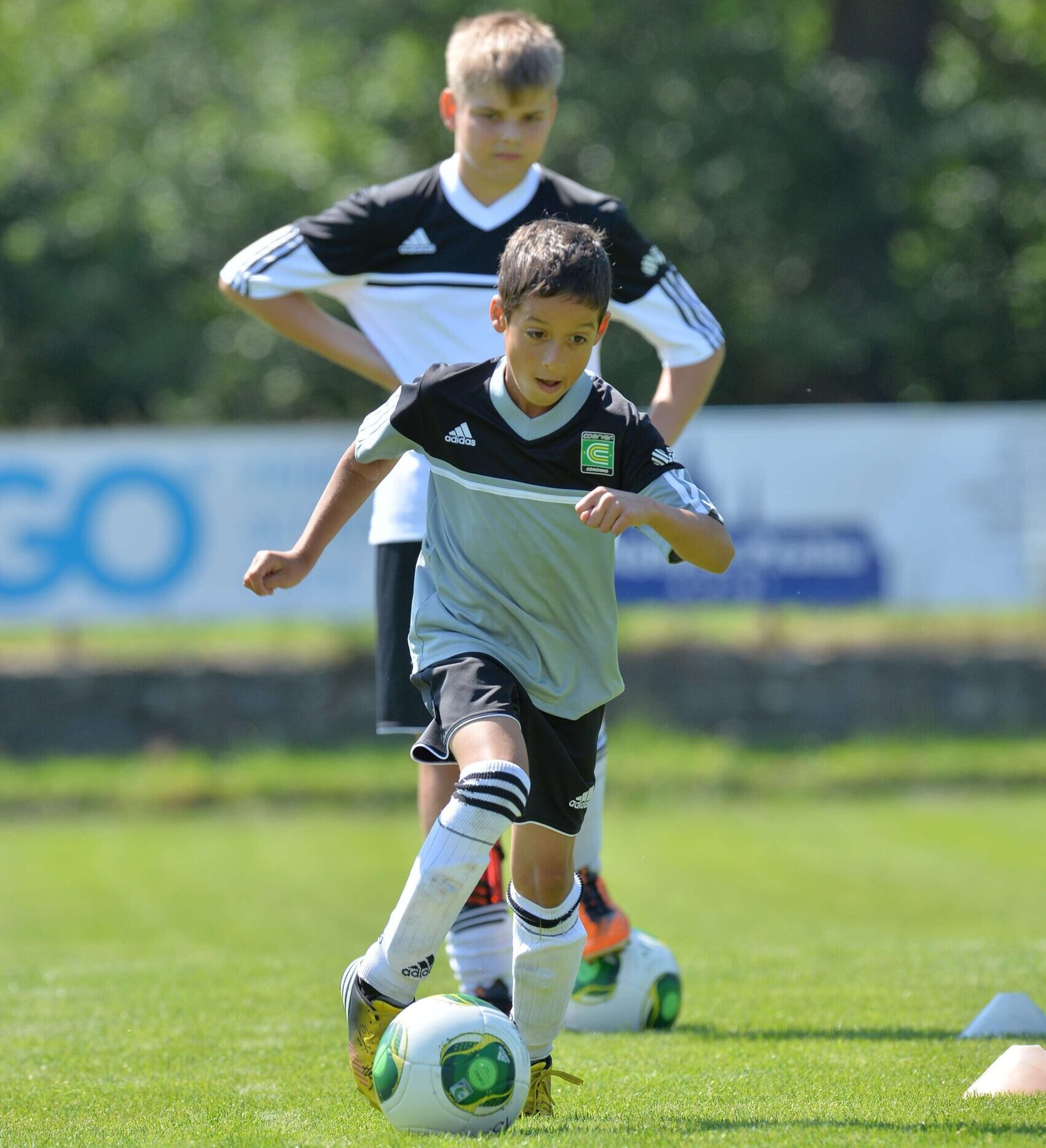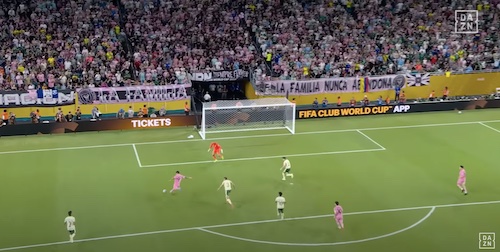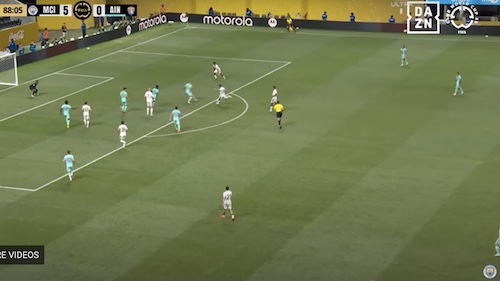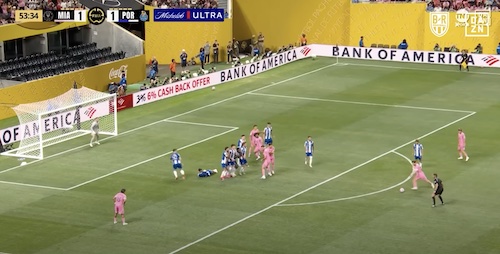What position do you play on the soccer field? Here’s a quick run down of the all the positions in soccer, from a winger to a defensive midfielder to a forward and so on. As a soccer player, figure out what position on the field enables you to show your talent and soccer skills the best. As a soccer coach, find out what position a player can play with the most confidence and freedom and also help your team win games.
However, while soccer players might play one position or have one role, in today’s modern game most players can adjust and play a number of different positions on the field. This means being able to play on the right or left side or move into the attack as well as having the endurance to get back and defend.
Soccer positions guide video.
At the same time though, specialization is key, whether that’s being a goal scorer, an exceptional crosser of the ball or someone who just doesn’t get beat and wins every ball on defense. For instance, David Beckham is an expert crosser of the ball, David Villa is a pure goal scorer, and Rio Rerdinand is a classic ball winner – those are their areas of expertise.
It’s a balance, you want to have certain unique qualities that set you apart from other soccer players, but you also want to be able to adjust and play different roles or soccer positions at certain moments in the game.
Your soccer position doesn’t define you as a player, especially when you’re younger. Just look at Alphonso Davies of Bayern Munich, who played forward in the MLS but has become a star in Germany player outside back, using his speed and skills to goal scoring chances for his club.
Soccer Positions Guide for All Players:
Attacking Midfielder – This is the midfielder who always looks to get the ball and start the attack. They’re sometimes called the playmaker. They are the creative engine of the team. Their passes lead to goal scoring chances and the ball is always on their foot. Think of Xavi or Iniesta of Barcelona and Real Madrid’s Kaka.
Attacking midfielders are experts at the give and go, switching play, and the through ball. These are players who provide that killer goal-scoring pass in behind the defense but also help maintain possession. The attacking midfielder also scores goals. Defense is not their first priority.
Box-to-Box Midfielder – This is the midfielder who can play from one goal box to the other, meaning they can attack and defend. Essentially they can get up and down the field throughout the game. They are tireless and have tremendous work rates. They can prevent goals with big tackles and score goals. Think Stuart Holden of Bolton or Manchester United’s Darren Fletcher. One of the most important soccer positions in today’s game. Jordan Henderson of Liverpool is an excellent box to box midfielder. So too is Chelsea’s N’Golo Kante, who just seems to be able to run none stop during the game.
Center Midfielder – These are the players who don’t lose the ball but help their teams keep possession. They have great vision, control and passing ability. They get everyone involved in the game and create goal-scoring chances or develop and build attacking sequences for for their team. They are a combination of a holding midfielder and attacking midfielder. They can play both short passes and the long ball. Arsenal’s Cesc Fabregas is a good example.
Holding Midfielder – The holding midfielder sits back and spreads the ball around the field. They are exceptional passers of the ball. They read the game really well and win balls by intercepting passes. They’re less likely to get into the attack as much as an attacking midfielder but they can score goals and shoot from distance. Think of Michael Carrick or Paul Scholes of Manchester United. Although Scholes probably fits into a number of categories as far as midfielders go.
The Enforcer or Hard Man – These are most often midfielders who make tough tackles and give an attitude to their team. They lead their team and intimidate the other team. However, sometimes their desire and fight can get them into trouble, as they earn yellow or even red cards. This is something they have to monitor and keep in check. But this is an important role for all teams.
Every soccer team needs a player who demands the best from everyone on the field and won’t let teammates receive harsh treatment from the other team. If one of their teammates is fouled unfairly, they’ll make a point of making an equally hard tackle when they get the chance on the other team. They are very vocal and demand the best from their teammates. If anyone is not giving their best, they’ll be sure to let them know. Think Gennaro Gattuso of AC Milan or Roy Keane of Manchester United.
Winger – Have great speed and the ability to beat players on the dribble. They get down the line and cross the ball. Think Ryan Giggs of Manchester United or Gareth Bale of Tottenham Hotspurs or Arjen Robben of Bayern Munich. They are less relied upon for defensive purposes. Their main purpose is to get into the attack and create chances, most of the time by getting down the line and crossing the ball.
Right Midfielder – Technical strong with the ball at their feet, they can dribble, pass, shot and cross. These players have good endurance and can get back and defend. They are good crossers of the ball, tough tacklers, and read the game very well. In today’s game the outside back has become an attacking element of the game. Most often they are right footed, however, in today’s game, many left footed players are playing on the right side so they can cut inside and shoot with their right foot.
Left Midfielder – Technical strong with the ball at their feet, they can dribble, pass, shot and cross. These players have good endurance and can get back and defend. They are good crossers of the ball, tough tacklers, and read the game very well. Most often they are left footed, however, in today’s game, many right footed players are playing on the left side so they can cut inside and shoot with their left foot.
Right Fullback – Usually right-footed players. Tough in the tackle, can jump and win head balls, serves in good driven balls to forwards, crosses the ball well, reads the game, doesn’t dive in, tough in the tackle, and communicates with the rest of the back line.
Top fullbacks today, players like Dani Alves, can get into the attack by overlapping, playing give and goes, or flying down the wing for a switch, and then he also gets back to defend. How do you become a good fullback, copy some of the best players in the game. Top fullbacks to mirror your game after: Ashley Cole, Sergio Ramos, Philip Lahm, Dani Alves, Maicon, Patrice Evra.
Left Fullback – Usually left footed players. Tough in the tackle, wins headers, serves in good driven balls to forwards, good crosser of the ball, reads the game, doesn’t dive in, and communicates with the rest of the back line. How do you become a good fullback, copy some of the best players in the game. Top fullbacks to mirror your game after: Ashley Cole, Sergio Ramos, Philip Lahm, Dani Alves, Maicon, Patrice Evra.
Sweeper – In many ways this position has been faded out, but players like Ricardo Carvalho of Real Madrid still function much like a sweeper playing at the very back and cleaning things up, covering for other players, reading game. The sweeper is a very intelligent player, much like a central midfielder, and very comfortable on the ball.
Central Defender (Stopper or Center Back) – Qualities: leaders, fearless, tough, and skilled. Think Rio Ferdinand of Manchester United. These are players who can distribute the ball out of the back but also win head balls and snuff out attacks. They have good speed, strength and technically adept with the ball at their feet. Gone are the days when a defender only had to win the ball and make tackles and clear the ball. Today, defenders are sharp with the ball at their feet and tenacious in the tackle.
Forward (Striker) – These are the players how just have a nose of the goal. They can sore with their head, right and left feet, on the volley, sliding on their knees or just about anyway possible. Top forwards in the game, Samuel Eto’o of Inter Milan and David Villa of Barcelona. Think of Javier “Chicharito” Hernandez of Manchester United, who has been on a goal-scoring tear.
Floating Attacker – Incredibly skilled, they can dribble, pass, shoot and do the unexpected. They score goals as well as setup their teammates. Think Lionel Messi or Wayne Rooney, who, for their teams sometimes float around the attacking area looking for the ball and ways to get in behind the defense. This floating attacker position is also sometimes referred to as the False 9.
Goalkeeper – This is of course the only player in soccer who can use their hands. However, in today’s game, the keeper has to be skilled at using their feet too, so they can clear the ball and help their team maintain position and switch the attack. Keepers need to possess a fearlessness, as they have to put themselves in dangers positions, whether it’s coming out for a cross or stopping a player charging at them one versus one.
Keepers don’t need to be tall, but quick and agile, able to tip balls over the bar and get down to deflect the ball from going into the lower corner. Who are some of the best keepers in the game to learn from: Iker Casillas of Real Madrid and Edwin Van Der Sar of Manchester United.
As far as soccer positions go, keeper is becoming one of the most interesting in the modern game as keepers now have to be skilled on the ball and with distribution and possession.
Extra: Again, the modern game is one of fluidity, where players switch positions and nothing changes. Where the right fullback can play right midfielder or vice versa. Fullbacks can get into the attack and forwards can come back and defend, if needed. Just look at the twins Fabio and Rafael da Silva of Manchester United, Ashley Cole of Chelsea, or Dani Alves of Barcelona, these are the new defenders, players who create goal scoring chances and win balls in the back – they get up and down the field and dominate their side.
In this way, the game of soccer today is about movement and versatility. The best evidence of this is in the midfield. This is where the most changing of positions takes place. A central midfielder floats out wide to find space, switching places with a wide midfielder or winger, and nothing changes. This change can throw off the defense and create goal scoring chances. And the new concept of playing right footed midfielders on the left side so they can cut in and shoot with their favored foot is evidence of the game constantly evolving.
In the end, it pays to be versatile. And if you have good technical skills, then you’ll feel comfortable in any position on the field.
As a player, you’re more likely to succeed in the game if you are rounded and someone who can both attack and defend. It’s interesting how many times you see young players who once played in the attack, as forwards, and then become defenders when they move on to the college or professional game. If you have the skills and ability then you’ll always have a place on the pitch, and that’s what every player wants.
Check out these soccer training sessions for other soccer positions:
- Training Sesssion for Forwards
- Training Sesssion for Central Defenders
- Training Sesssion for Central Midfielders
- Training Sesssion for Right Midfielders
- Training Sesssion for Left Midfielders
- Training Sesssion for Right Backs
- Training Sesssion for Left Backs
Learn about how your team should lineup at soccer formations versus certain teams or to stop different players.











